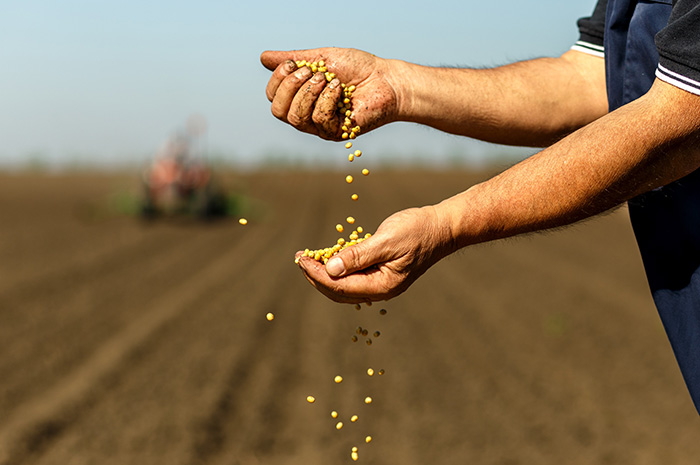
If you’re feeling queasy, we don’t blame you. As the back and forth over tariffs between the U.S. and China escalates, soybean farmers expect nothing less than a roller coaster end to the growing season.
Last month, the U.S. Department of Agriculture announced it would release $12 billion via the Commodity Credit Corp., with a third of it going to the creation of new agriculture markets, a third to purchase leftover commodities for federal nutritional programs and a third directly to farmers for soybean crops and other commodities.
You may have mixed reactions to this news. On one hand, if that ends up helping them recover, say, $1.00 to $1.50 per bushel, that would certainly balm the sting from the tariff effects. (To date, very few details have been released, so it's unclear how much farmers would ultimately get.)
On the other hand, farmers like you are resilient. You’ve weathered many challenging price cycles, including these past five years. Which is why the Commodity Credit Corp. may not be welcome news: Farmers prefer to make cash flow through the free market, not from subsidies. And then there's the psychological element. Does it mean this tariff war isn’t going away anytime soon? Suddenly, a situation that farmers hoped would end quickly seems like it’s here to stay for a bit longer.
In response, various ag groups are calling for solutions and stepping up awareness campaigns. The American Soybean Association is urging Congress committees to support negotiation of new free trade agreements with Japan and other countries.
“We need these tools,” says John Heisdorffer, president of the ASA. “The certainty and stability of our industry depends on, number one, getting these tariffs removed as quickly as possible and, number two, taking steps now to offset the damage done by this trade war by negotiating trade agreements and funding programs essential to opening new markets for our farm products.”
In the meantime, there are a thousand takes on the effects of the tariffs and almost as many questions. Will our long-term trade relationship with China be strengthened or damaged? How much ground can we make up by expanding trade with Japan and other countries that are open to soybeans? (Recent news that the European Union agreed to buy more soybeans is a promising start.) Will the U.S.-China tariffs battle make the Brazilian soybean market into the ultimate winner?
As more answers come into focus in the coming months, it’s more important than ever to manage your inputs and balance sheets. To make sure you’re on the right path, meet with one of Minnwest Bank’s ag bankers to discuss Agri-Business Account Management. At Minnwest, we are also farmers and producers, so we’re uniquely qualified to give you the informed and professional guidance you need to weather these challenging times.


